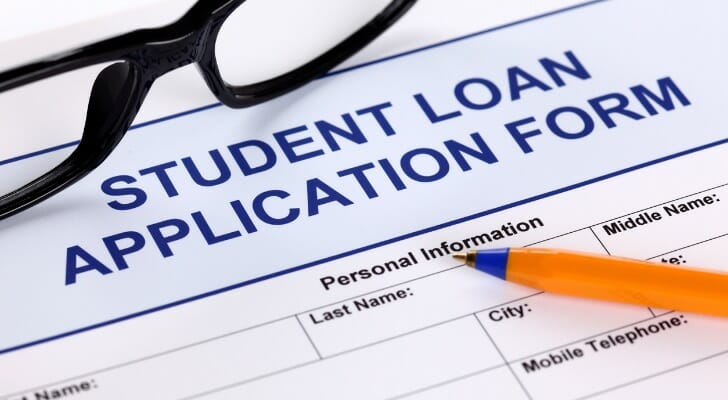Student loans have become one of the most complicated aspects of modern finance. They involve large – often high interest rate – amounts of debt, typically taken on by young people with little current earnings and typically structured along 20-year repayments. The macroeconomic impact of student debt has touched nearly every aspect of the economy, diverting consumer spending power across sectors ranging from home goods to housing, autos and even new families. Whether you are a potential borrower or just trying to understand the modern economy, student loans are essential to understand.
Need help managing your student loans over the long term? Speak with a financial advisor today.
Main Categories of Student Loans
Federal Student Loans
Federal student loans are provided through the Department of Education. Not all of the money necessarily comes from the government, although most does, but the government guarantees any loan that it does not directly extend and sets the terms for all lending.
Federal student loans come with a host of protection for borrowers. This includes, but is not limited to, income-based repayment programs, hardship deferrals and eventual loan forgiveness. Almost any student enrolled in an accredited school can apply for a federal student loan, since these loans are processed through the school’s financial aid office. Few even require a credit check. However, some circumstances such as outstanding tax debts can disqualify a borrower.
Private Student Loans
Private student loans are extended by banks, credit unions and other private financial institutions. Even an individual can extend a private student loan. Private student loans can take almost any form, since they are ultimately bounded only by borrowing and lending laws. However, there are several standard types of private loans.
Most private student loans are also offered through university financial aid offices and websites. This has pushed the standardization of this industry, as offices offer pre-set packages to students through established lenders. This also tends to fuel confusion among students. Given that schools generally present federal and private loans through the same office using similar procedures, students often can’t tell who they have borrowed money from or even whether a given loan is federal or private.
Types of Federal Loans
Subsidized and Unsubsidized Stafford Loans
A subsidized loan is one in which the government directly lends you money through the Department of Education. The government also pays the interest on your loans while you are in school and during any periods of qualified nonpayment, such as deferrals and grace periods. Only undergraduates can take subsidized loans.
With an unsubsidized loan the government also directly lends you money through the Department of Education or partners. However, the government does not pay any interest on these loans, including while you are in school. This is one of the most significant sources of surprise debt for many students, as undergraduate student loans can accumulate more than four years’ worth of compound interest before repayment begins (more if the student attends graduate school).
Both graduate and undergraduate students can take out unsubsidized student loans. However, the government caps the maximum amount you can receive in subsidized and unsubsidized student loans each year. This is based on your enrollment status as well as your tax status, as independent students can receive almost twice as much as those whose parents or guardians claim them as a dependent.
Undergraduate students can receive up to $31,000 in total aid if they are dependents and up to $57,500 if they are independent. Their borrowing is capped between $5,500 and $12,500 per year depending on tax and enrollment status.
Graduate students cannot receive more than $20,500 per year in unsubsidized loans. They cannot receive more than $138,500 in total, including any undergraduate loans.
DirectPlus Loans

DirectPlus, also known as GradPlus, is the federal lending program for graduate and professional students. It allows students to borrow additional money for graduate school, given that the unsubsidized loan program typically covers less than half of their needs. Unlike subsidized and unsubsidized loans, DirectPlus requires a credit check.
Both graduate students and their parents can apply for a DirectPlus loan. The loan is capped at the cost of attendance as determined by the school itself, less any additional loans or other financial aid the student receives.
Types of Private Loans
Private student loans are any loans issued by a state government, private institution or occasionally even individual without the involvement of the federal government. Almost always a bank or other financial institution will extend the loan. Often the institution will exist exclusively to extend student loans, in the way that some lenders exist only to write mortgages.
There are several standard types of student loans. Most are offered directly through the same financial aid office that universities use to process federal student loans, and schools typically present them as part of a student’s standard package of options.
Private education loans typically require a credit check and often come with higher interest rates than most federal loans (although not DirectPlus loans). They also do not come with the protections offered by federal loan programs, such as hardship forbearance and income-based repayment. Whenever possible, students are usually better served by taking a federal loan over a private one.
Private Education Loans
These loans mimic federal student loans in that they are intended to cover the costs of attendance in an undergraduate or graduate program. It is increasingly common for students to rely on private education loans to cover the gap between Stafford loan annual maximums and the tuition at their institution.
For example, an undergraduate student whose parents claim them as a dependent cannot borrow more than $31,000 during their undergraduate career. It costs approximately $88,720 to attend a public university for four years, and a little over $203,000 to do so at a private school. For students without family resources to rely on, the difference typically must come from private lenders.
State Loans
Many states offer student loan programs. These programs are typically restricted to either schools in their state, students who are residents of that state or both. (In the last case, the program would be restricted to in-state students at a state university.) When available, these programs typically cover costs of attendance such as tuition and cost of living.
State loan programs typically mimic private lending in that they often have higher interest rates and lack the protections of federal lending.
Medical School Loans
Because doctors can typically expect to make a high income after graduation, many banks offer dedicated student loans for medical students. These programs cover costs of attendance such as tuition and costs of living. Qualifying students can usually get a better rate than the DirectPlus loans, which offers one of the highest interest rates of most student lending programs, however they do not receive any of the protections of a federal student loan.
Program-Specific Loans
Many types of programs have dedicated loans to help pay for that program, or for specific aspects of the education. Students who want to attend a professional school such as a coding bootcamp, for example, can often find loans dedicated to helping them pay for that specific program.
Other students who have specific costs associated with their program will often find loans for those costs, such as bar exam loans which help law students pay costs associated with taking the bar exam. Or, some schools will offer loans to help students take semesters abroad, given that these are often expensive programs that many schools believe offer significant value.
If you are attending a specific program that does not fit within the rubric of a standard university degree, ask your school about private loans to help cover the costs of attendance. The same goes for pursuing a degree that comes with specific, dedicated costs.
Bottom Line

The main way of receiving student loans or related benefits is through the federal government. However, the government’s loan program has limits and caps, meaning that many students also need to find financial aid on the private market. Both sectors offer a wide range of options. Just be sure to read any offer clearly to make sure you understand exactly what you’re getting yourself into. The last thing any graduate needs is to have these debts stay with them to retirement.
Tips on Managing Your College Debt
- Consider working with a financial advisor to plan ahead for student loans in your long-term financial plan. Finding a financial advisor doesn’t have to be hard. SmartAsset’s free tool matches you with up to three vetted financial advisors who serve your area, and you can interview your advisor matches at no cost to decide which one is right for you. If you’re ready to find an advisor who can help you achieve your financial goals, get started now.
- Use SmartAsset’s student loan calculator to get an estimate of your monthly payments and student loan amortization over time.
Photo credit: ©iStock.com/Ekaterina79, ©iStock.com/TheCrimsonRibbon, ©iStock.com/designer491
